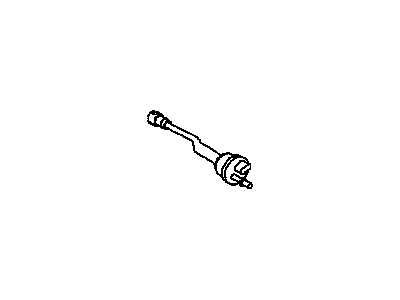
My Garage
My Account
Cart
Genuine Saturn LS1 Canister Purge Valves
Fuel Tank Evaporator Purge Control Valve- Select Vehicle by Model
- Select Vehicle by VIN
Select Vehicle by Model
orMake
Model
Year
Select Vehicle by VIN
For the most accurate results, select vehicle by your VIN (Vehicle Identification Number).
1 Canister Purge Valves found
Saturn LS1 Canister Purge Valves
Each OEM Saturn LS1 Canister Purge Valves we offer is competitively priced and comes with the assurance of the manufacturer's warranty for the part. Furthermore, we guarantee the speedy delivery of your orders right to your doorstep. Our hassle-free return policy is also in place for your peace of mind.
Saturn LS1 Canister Purge Valves Parts Questions & Experts Answers
- Q: How does the Evaporative Emissions Control system work, and how are Canister Purge Valves, Fuel Pressure Sensor and Vapor Canister replaced on Saturn LS1?A:The EVAP (Evaporative Emissions Control) system is a system which is intended to minimize the amounts of fuel system evaporative emissions that is, unburned hydrocarbons to get out to the atmosphere. During hot times, vapors present in the fuel tank expand and, at certain pressure, pass through the fuel vapor vent valve and the control valve to the EVAP canister where they are stored until needed by the engine. It is maintenance free and is situated under the vehicle on the top of fuel tank and comprises of activated carbon canister. This fuel tank pressure sensor keeps track of the pressure in the tank and sends its data to the PCM in an OBD-II leak test. The EVAP canister vent solenoid which is normally open closes off the system for inspection and testing and the canister purge solenoid which is controlled by the PCM controls the flow of vapor back into the intake manifold. The usual signs of bad EVAP system are smell of fuel, rough idle, stalling and other driveability problems result from many a times defective components or busted EVAP hoses. If the fuel vapors pressure is too high, when the gas cap is opened, it will emit a ''whooshing'' noise which makes it easy to diagnose the situation. Replacement includes particular procedures concerning the EVAP canister purge solenoid, the vent solenoid, and the fuel tank pressure sensor which are removal of electrical connectors, removals of mounting bolts, and reconnection and tightening of all new retainers and straps as may be necessary.







